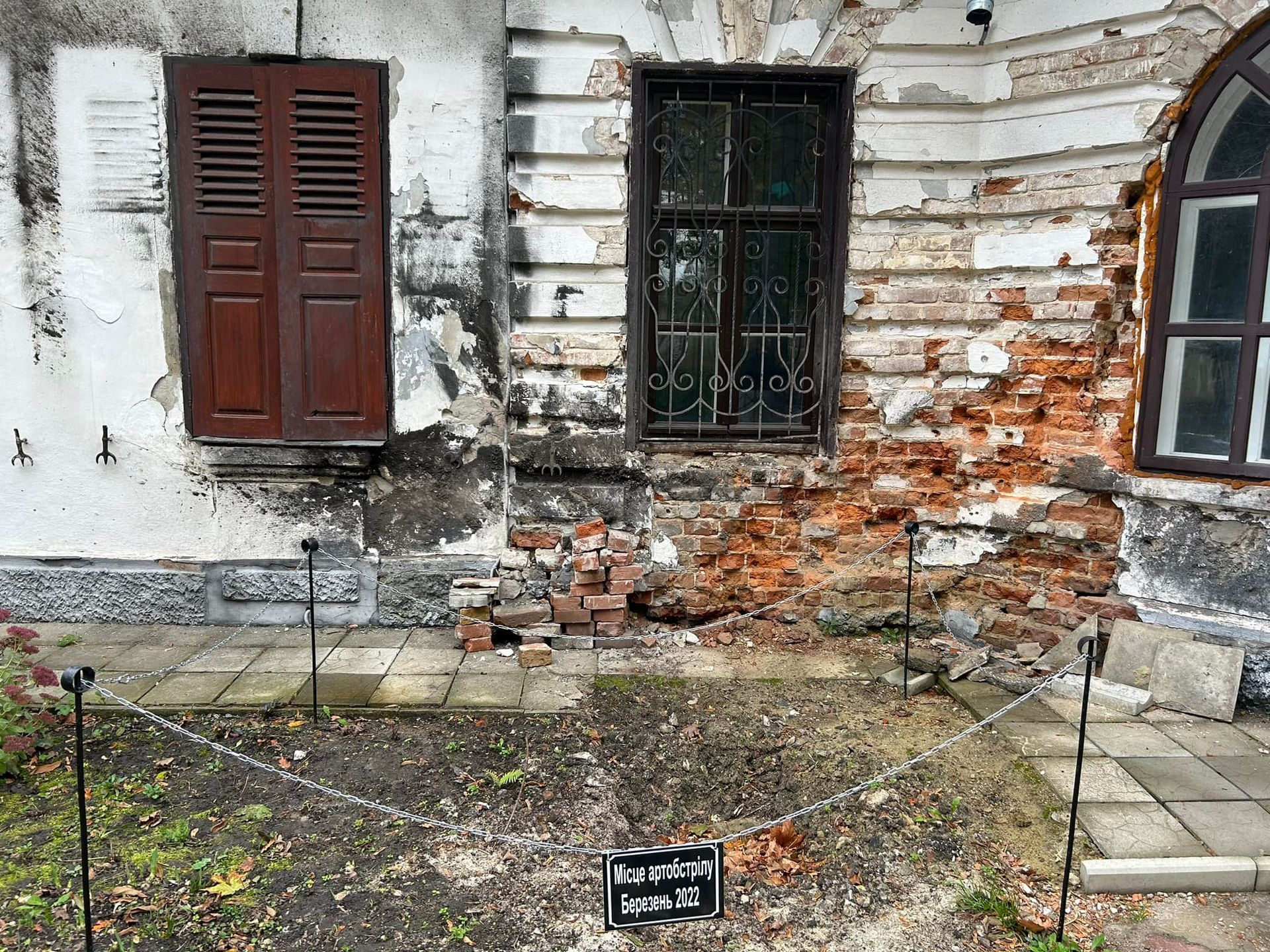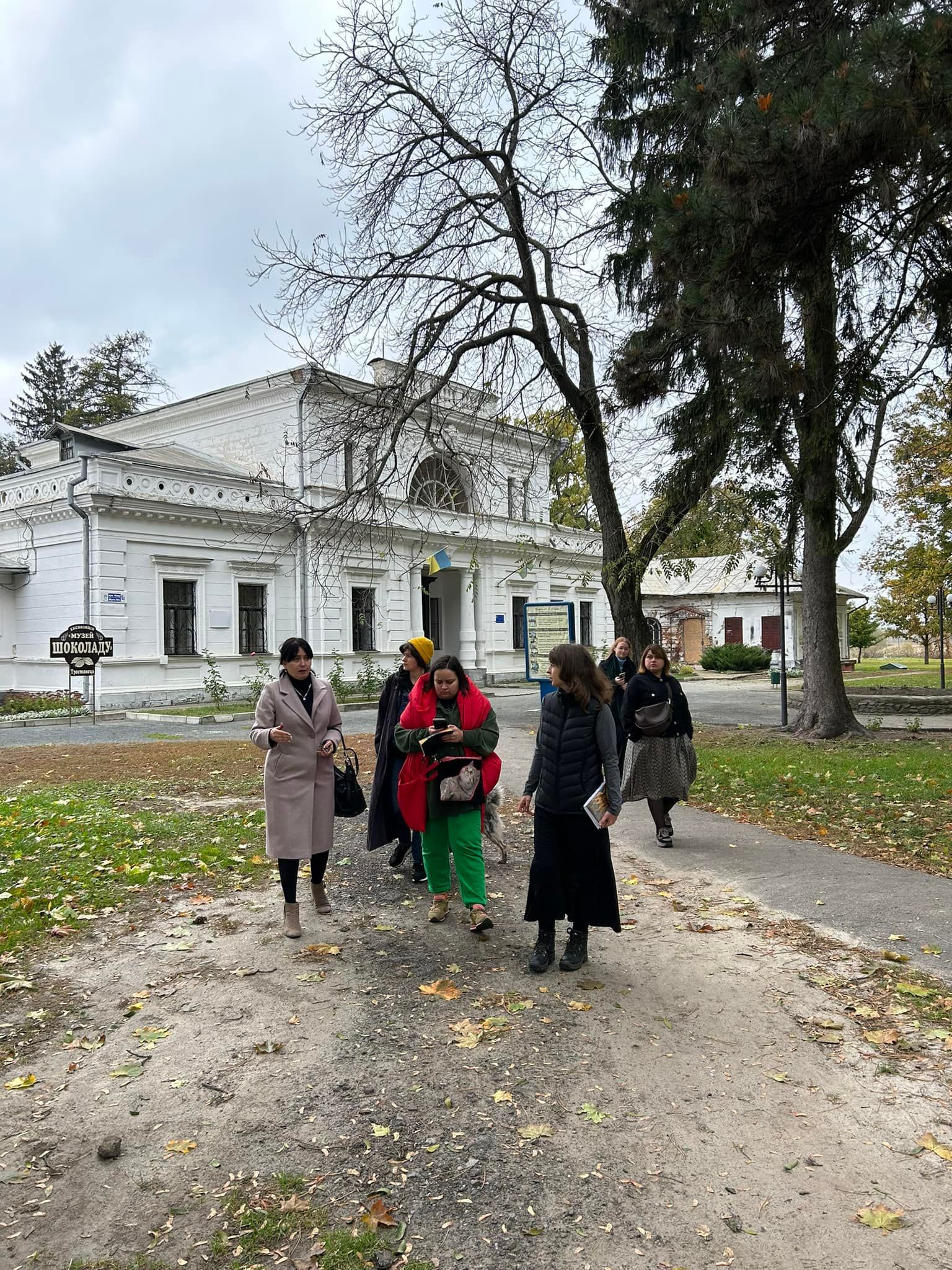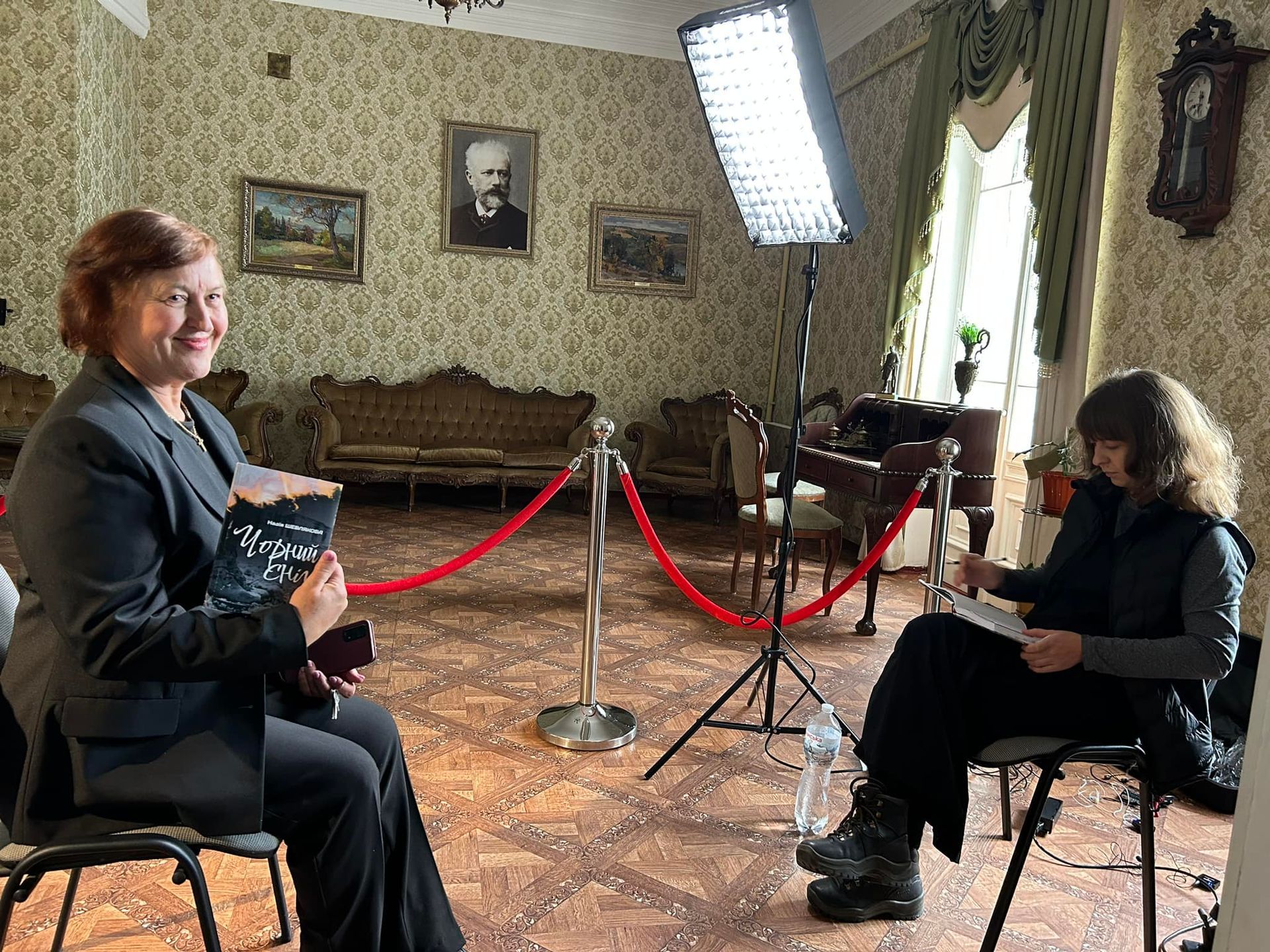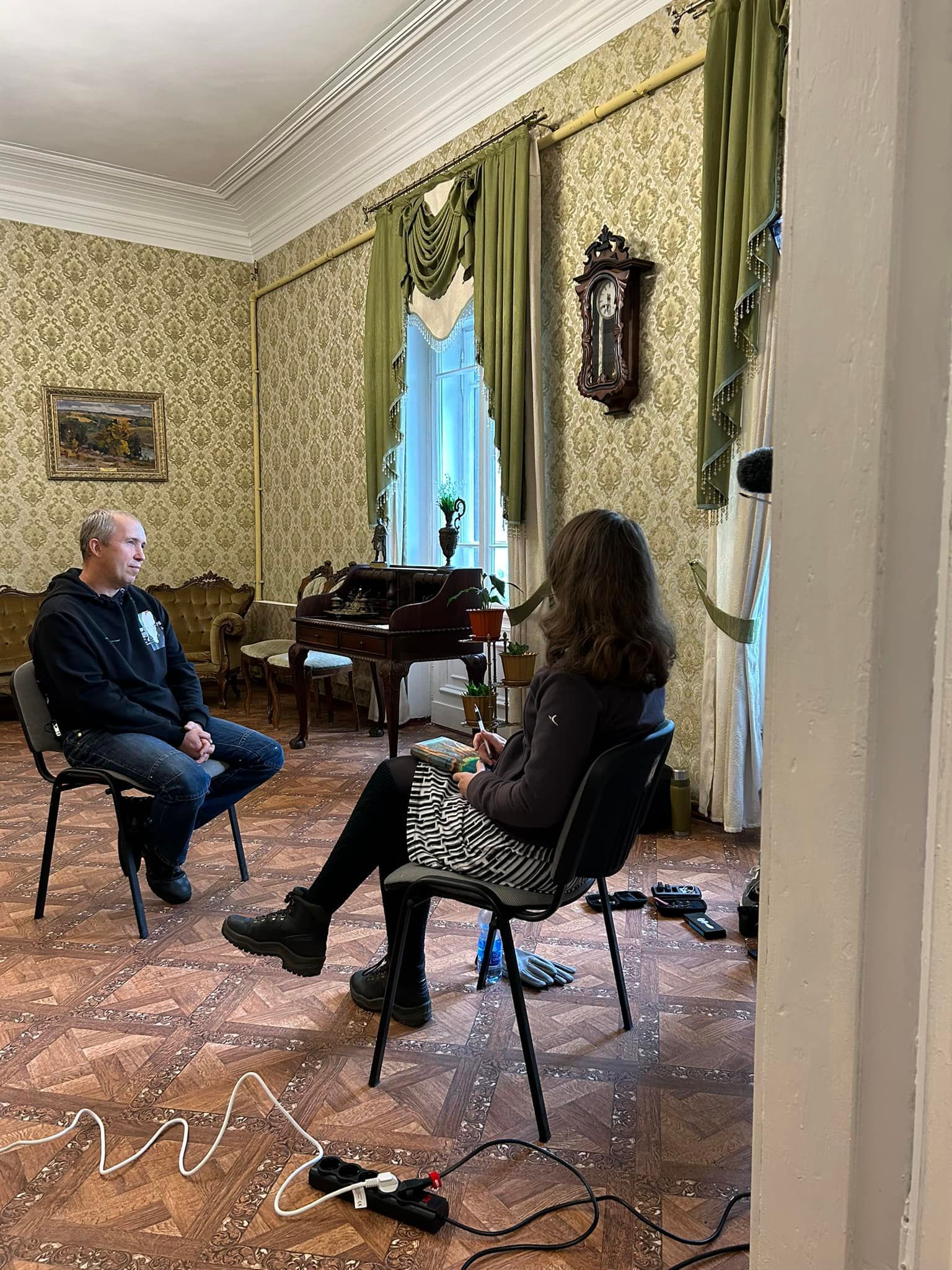Wounded Culture. Episode 2. Trostianets
Work on the second episode of the “Wound Culture” project started during the expedition to Trostianets City, Sumy Region (35 km from russian border) in October 2023. It was planets to document the history of the Trostianetskyi Museum and Exhibition Center - L. Koenig's Estate, which survived shelling during the battles for the city, and the occupation.
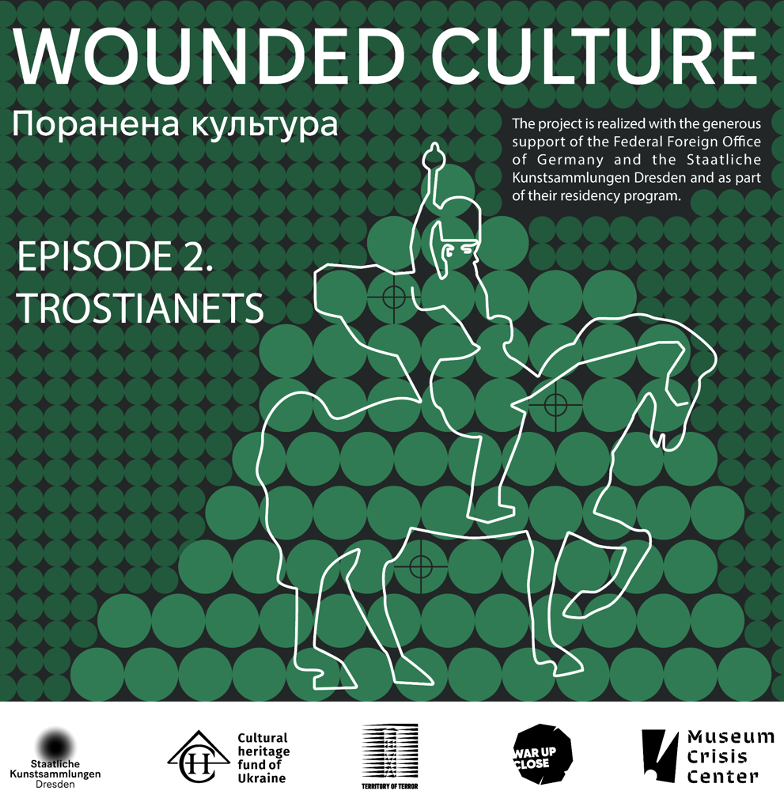
- Village Library in Soldatske. It was damaged as a result of russian shellings on March 8th - 9th 2022 but later restored by the local community and reopened in September 2023.
- the history of the Kruglyi Dvir (1749) manor house, which was damaged during the battles for the city in the second half of March 2022 and where Russian military equipment was deployed during the occupation,
- the history of the Krasnotrostianets Forest Research Station (1911), which burned down on March 23, 2022, as a result of a fire during active battles for the city, because the Russian occupiers did not allow it to be extinguished and did not allow either firefighters or civilians to enter. As a result, the equipment, unique archives, a scientific library, and plant samples were irretrievably lost.
About our filming in Trostianets.
More pictures from the expedition.
“Wounded Culture. Episode 2. Trostianets” is realized with the support of the
Staatliche Kunstsammlungen Dresden.
At half past seven in the morning, librarian Valentyna Hantseva and her husband arrived at Valentyna’s place of work in an old Zaporizhets car. “Planes were flying above our village and it was scary, so we left our car in the garage. Zaporozhets will be less of a pity if something happens with it,” Valentyna said during the interview with Liana Blikharska.
“When I with my husband arrived the library was open, everything was lying around, broken, the windows were blown out, the ceiling was gone, there was clay everywhere, and books were lying in this mess. At first, the girls who worked nearby helped us a little, but they went to their workplaces. Then my husband and I packed the books in bags, took 5 rides to bring everything home, and put the books in a shed. My husband went to bring chairs, a multimedia board, a projector, and computers, which we brought home a little earlier, put everything in boxes, glued and sealed, and it stayed there until the library was repaired. I did it from the heart because it was my job. The community put so much work into it."
Read more about the
Library in Soldatske.
How we gathered books for the library:
https://cutt.ly/0ejUKDP5
How we gathered books for the library: https://cutt.ly/7ejUK5qo
“On February 24, a lot of tanks of the Kantemyr Division entered Trostyanets. It was scary in here - the rockets were flying above us, shells, something was exploding. They smashed and destroyed the shops, took vodka and snacks, got drunk, and had fun shooting at people," Vasyl Ihnatenko recalls the beginning of the full-scale invasion.
“The guys from the forest came, they were fed here, and just the liberation they came and said that everyone had to leave. My wife and I went to the west of Ukraine. When we came back, there were shells in the yard, not all the mines had exploded - they came to demine, the windows were broken in the apartment.”
“On March 23, 2022, a day or two before the decisive battle for the liberation of Trostianets from the Russian invaders, a shell hit the station building and a fire broke out, and since there was a lot of wood, there was parquet everywhere, the partitions between the rooms were also made of wood, there was a lot of wood in the walls of the second floor, there was a lot to burn, and it burned, it was impossible to put the fire out," said Vasyl Ihnatenko, head of the Krasnotrostianets Forest Research Station, in an oral history interview with Liana Blekharska, a researcher at the the Wounded Culture project.
“It was still an occupation then. We tried to reach the firefighters, but there was no connection. We tried to reach the director of forestry because they also have the fire truck, but it was impossible to do something. So people were forced to watch everything burn.
Despite the administration rooms, that building hosted 2 apartments, which also burnt. After that, a Russian tank arrived and fired from the gate at the already burned forest research station. It was impossible to save anything during the fire, because all the people were in the basement, and they found out that there was a fire when it had already spread so far that it was impossible to go in and save anything. Rare scientific books on forestry burned in the fire - the library consisted of 16,000 volumes, field materials from 1923, and scientific reports."
At the end of November 2023, the founder of the Museum Crisis Center and co-founder of the Cultural Heritage Foundation of Ukraine Olha Honchar presented the project “Wounded Culture. Episode 2. Trostianets” at the conference of the Platform ‘Thoughts on the Future’, which is a continuation of the exhibition ”Kaleidoscope of Stories. Ukrainian Art 1912-2023” at the Albertinum Museum (Dresden, Germany). Read More.
Підтримано: Музей мистецтв Дрездена (Альбертінум)
Організатор: БО “Фонд культурної спадщини України”
Партнер: Меморіальний музей тоталітарних режимів “Територія Терору”, Музейний кризовий центр
ВР-частина: Війна у притул
Проєкт представлено на виставці “Небачена сила” в Києві в Українському домі.




